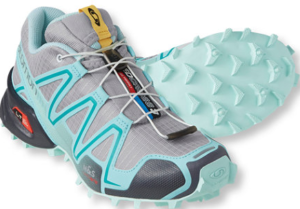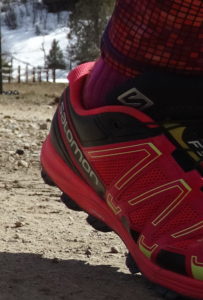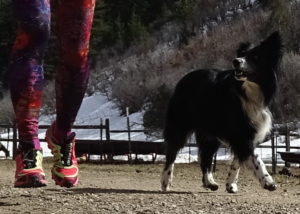Glory days as a top Maine high school runner and Division I athlete are long gone and thankfully, so are the shoes I used. Back then, we were still calling them “sneakers” and the industry had yet to diversify much from running shoes to racing shoes, road shoes, trail shoes, trail shoes for mud, trail shoes for soft terrain, etc.
 Shoes are now lighter, more supportive, and better all around. They make it easier to train for the Mancos Half Marathon without the specter of injury.
Shoes are now lighter, more supportive, and better all around. They make it easier to train for the Mancos Half Marathon without the specter of injury.
Since my running is entirely on and off trails and dirt roads, trail shoes fit the bill. I have been wearing two Salomon models: Fellraiser and SpeedCross 3.
I have a wide foot and in the past have needed to order men’s sizes. No need with these Salomon shoes. They were true to size and had a yummy fit, like a snug slipper thanks to the stretchy layer of fabric stitched permanently under the laces. Salomon calls it their Sensifit System. Kiss those floppy, shifting tongues goodbye.
Both models have the QuickLace system which, in my many off-road miles proved especially functional:
 No burrs, grass seeds, or thorns stuck to the laces (on more conventional laced shoes, this is sooo annoying. Seeds stick to the laces and invariably work their way like chiggers towards the foot. Extracting them takes time and focus. No thank you.)
No burrs, grass seeds, or thorns stuck to the laces (on more conventional laced shoes, this is sooo annoying. Seeds stick to the laces and invariably work their way like chiggers towards the foot. Extracting them takes time and focus. No thank you.)
Laces do not snag or come untied by twigs and briars.
The Speed Cross 3 has more cushioning and a wider footprint. The Fellraiser is lighter and lower. I’ve been favoring the Fellraiser lately, but plan on swapping out for the Speed Cross pair as I add mileage.
Folks say you need hiking boots when things get rough and sideways. I disagree. You need strong ankles, a nimble gait, and a pair of Salmons.
And here’s a surprise benefit: you’d think that the more aggressive tread would mean the shoes would track more dirt into the house and car. Not so. In my wearings, the “Contagrip” actually brought in less.
